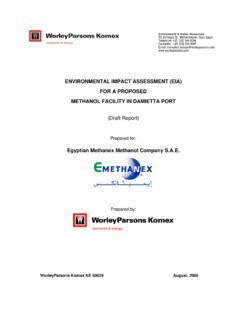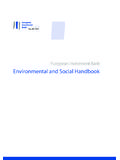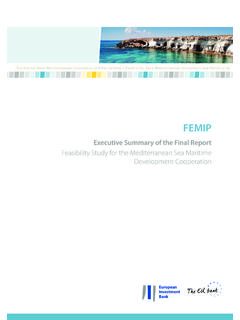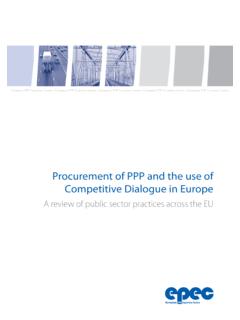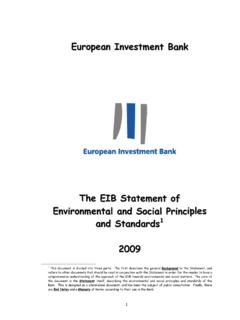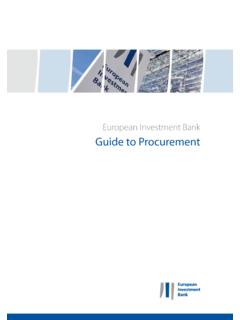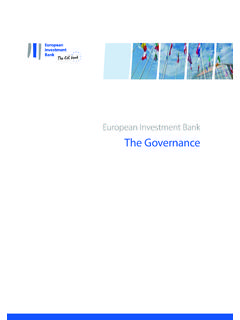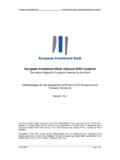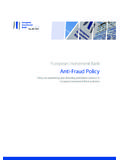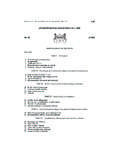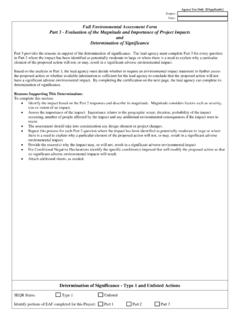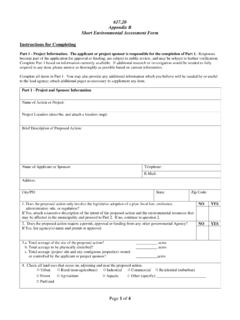Transcription of GRAIN LNG IMPORTATION FACILITY - European Investment …
1 GRAIN LNG IMPORTATION FACILITY . National Grid GRAIN LNG Limited environmental impact Assessment Volume 3 Non Technical Summary GRAIN LNG Phase 3 Expansion June 2006. National Grid GRAIN LNG Limited Phase 3. Non Technical Summary Isle of GRAIN GRAIN LNG IMPORTATION FACILITY . National Grid GRAIN LNG Limited environmental impact Assessment Volume 3 Non Technical Summary Nitrogen FACILITY June 2006. Prepared by: environmental Perspectives 24 Bruton Place London W1J 6NE. T: 020 7529 1530. F: 020 7491 9654. Non Technical Summary June 2006 i GLNG Phase 3. National Grid GRAIN LNG Limited Phase 3. Non Technical Summary Isle of GRAIN NON TECHNICAL SUMMARY. This document is the Non Technical Summary of the environmental Statement (ES) prepared by environmental Perspectives on behalf of National Grid GRAIN LNG Ltd.
2 To accompany the planning application submission for the GRAIN LNG Phase 3 GRAIN LNG IMPORTATION FACILITY upgrade (the proposed development ). INTRODUCTION. National Grid GRAIN LNG Ltd. (the Applicant' ) is seeking full planning permission and other consents, licenses and permissions to construct additional Liquefied Natural Gas (LNG) IMPORTATION facilities at the GRAIN LNG. IMPORTATION FACILITY , on the Isle of GRAIN , Kent. The Phase 3 proposed development comprises the following elements: Demolition of the existing Jetty 8;. Construction of new jetty approach and jetty head (New Jetty 8);. Construction of a short section of above ground LNG pipeline;. Construction of 2 LNG storage tanks, and vaporisers, compressors and other processing equipment; and Construction of a Nitrogen FACILITY .
3 THE SITE. The application site is located at the eastern end of the Hoo Peninsula, on the north bank of the Medway Estuary, on the Isle of GRAIN , near Rochester in Kent. Ordnance Survey reference for the application site is NGR 587605 175315. and a site plan showing the location of the application site and the surrounding area can be found at Figure 1. THE EIA LEGISLATIVE FRAMEWORK. The environmental impact Assessment (EIA) is a systematic process during which potential significant environmental effects from a proposed development are identified, assessed and the scope for minimising these Non Technical Summary June 2006 1 GLNG Phase 3. National Grid GRAIN LNG Limited Phase 3.
4 Non Technical Summary Isle of GRAIN presented within an ES to the relevant decision maker, in this case Medway Council. There are two types of development that may be subject to EIA as defined by the Town and County Planning ( environmental impact Assessment) (England and Wales) Regulations, 1999 ( the EIA Regulations ). These are: Schedule 1 Developments; and Schedule 2 Developments. It is mandatory for any development falling within the description of a Schedule 1 Development to be subject to an EIA. Applications for permissions relating to Schedule 1 Developments must be accompanied by an ES. It is not always mandatory for Schedule 2 Developments to be subject to an EIA.
5 The EIA Regulations categorise development types and provide thresholds to assist with the identification of Schedule 2 Developments that may require an EIA. The proposed development is not a Schedule 1 Development as defined by the EIA Regulations. Paragraph 10 (Infrastructure Projects) of Schedule 2. includes Oil and gas pipeline installations' where the area of development exceeds 1 hectare. Accordingly the proposed development falls under Schedule 2 and represents an EIA Development under the EIA Regulations. In accordance with the EIA Regulations this ES will accompanies the application submitted for the proposed development on behalf of the applicant. The ES identifies the potential environmental effects likely to result from both the construction and operation phases of the proposed development.
6 The significance of these effects are determined and where any adverse effects are identified, measures to avoid, minimise or compensate for these effects are proposed. The information within the ES will be a material consideration during the planning decision process. Non Technical Summary June 2006 2 GLNG Phase 3. National Grid GRAIN LNG Limited Phase 3. Non Technical Summary Isle of GRAIN NON TECHNICAL SUMMARY. The Non Technical Summary is intended to provide members of the public and any other interested parties without specialist technical knowledge, with information to understand the proposals and the principal findings of the EIA, as presented in the ES. BACKGROUND.
7 UK Gas IMPORTATION The UK was a net exporter of natural gas for over 20 years but in 2004, declining North Sea production meant that the UK became a net gas importer. Although the majority of the gas consumed in the UK is still sourced from fields in the UK sector of the North Sea, the ability to produce gas domestically is forecast to decline rapidly, so that by 2010 around 50% of UK. demand will have to be met by imports, rising to 90% by 20201. Figure 2 UK Production Forecasts and Import Requirement 2. As UK production declines, natural gas will need to be imported from three groups of sources: across gas interconnectors from Europe;. 1. Gas demand is normally measured in billions of standard cubic metres per year (bcm/yr).
8 Total UK demand is forecast to rise at an average rate of 2% year for the foreseeable future. Figures from National Grid Gas Ten Year Statement 2005/6. 2. Source: TYS 2005, Figure Non Technical Summary June 2006 3 GLNG Phase 3. National Grid GRAIN LNG Limited Phase 3. Non Technical Summary Isle of GRAIN by pipeline from the Norwegian sector of the North Sea; and as Liquefied Natural Gas (LNG) from a variety of sources to at least three LNG terminals. The GRAIN LNG IMPORTATION FACILITY LNG is formed from natural gas by a super-cooling process known as cryogenic cooling . This liquefies the natural gas allowing its efficient transportation because the volume of liquid is much less than that of the equivalent gas.
9 LNG is transported by sea in purpose-built ships. The first modern LNG terminal in the UK, the Isle of GRAIN LNG IMPORTATION FACILITY , at the Isle of GRAIN in Kent, opened for commercial operations in July 2005 (the Phase 1 Development). Currently, the terminal is able to receive up to million tonnes per year (mtpa) of gas as LNG, equivalent to about 4%. of current UK gas demand. In August 2004 planning permission was granted for three additional LNG storage tanks, regasification facilities and ancillary development (the Phase 2 Development). The Phase 2 Development, currently under construction, will increase the terminal's capacity to around mtpa or 12% of current annual UK demand.
10 It is scheduled to be commissioned by mid 2008 and will be available to receive commercial cargoes by winter 2008 / 2009. STATEMENT OF NEED. Benefits of LNG. For distances greater than about 700 miles (1,100 km), it is cheaper to move gas by ship as LNG rather than by submarine pipeline. If the source and destination can be linked by onshore pipelines, this distance increases to about 2,200 miles (3,500 km). Shipping LNG has the additional benefit that the supply route is less vulnerable to political upheaval in transit countries than piped gas. This vulnerability was illustrated in January 2006 when a disagreement between Russia and Ukraine briefly threatened gas supplies to several countries in Central and Western Europe that are heavily dependent on gas pipelines which cross Ukraine.
